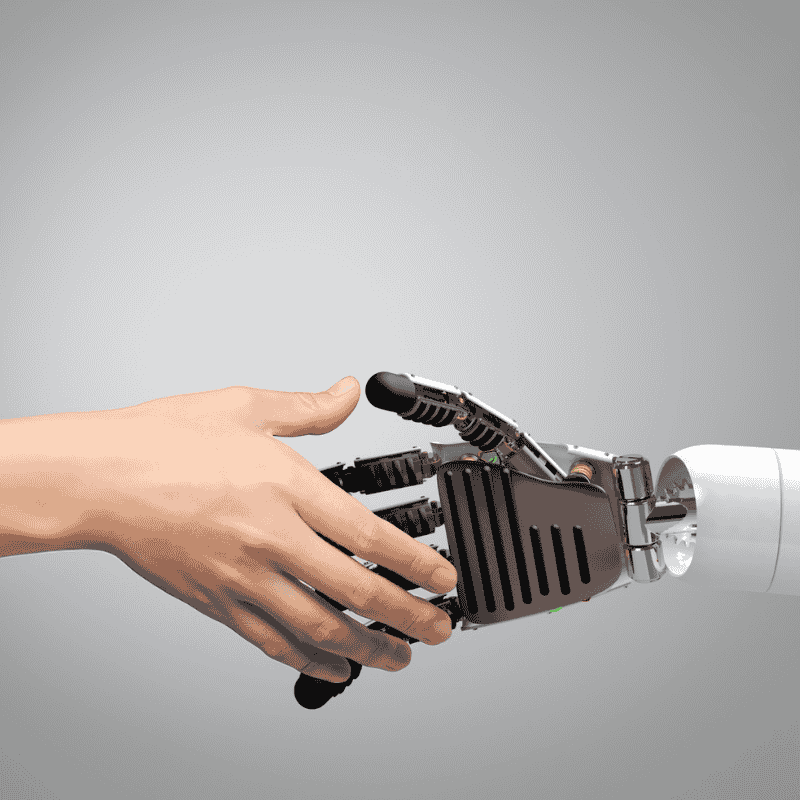🚨 UNPOPULAR OPINION: Most businesses are implementing AI for supply chain automation completely wrong—and it’s costing them thousands.
Here’s what most businesses don’t realize about AI for supply chain automation: it’s not just about throwing technology at the problem. It’s about strategically integrating AI to solve real pain points, optimize processes, and create a seamless flow of goods and information. Yet, many companies are stuck in the trap of overcomplicating their systems or underutilizing the tools they’ve invested in, leaving them with bloated costs and missed opportunities.
The supply chain is the backbone of any business, but it’s also one of the most complex and vulnerable areas. From demand forecasting and inventory management to logistics and delivery, even small inefficiencies can snowball into significant losses. This is where AI for supply chain automation shines—when done right. It has the power to transform chaos into clarity, reduce waste, and unlock unprecedented levels of efficiency. But here’s the catch: success depends on how you implement it.
In this comprehensive guide, you’ll discover:
✅ The exact AI for supply chain automation strategies that work in 2025
✅ Real case studies with measurable results
✅ A step-by-step implementation roadmap to avoid costly mistakes
✅ Common pitfalls that derail even the most well-intentioned AI initiatives
Whether you’re a small business looking to scale or a large enterprise aiming to stay ahead of the competition, this guide will equip you with the insights and tools to harness AI’s full potential. Ready to join the smart businesses dominating their markets? Let’s dive in!
AI for Supply Chain Automation Benefits: Revolutionizing Efficiency
In today’s fast-paced business environment, supply chain efficiency is no longer just a competitive advantage—it’s a necessity. Enter AI for supply chain automation, a game-changing technology that is transforming how businesses manage logistics, inventory, and operations. By leveraging AI-powered tools, companies can reduce costs, minimize delays, and enhance decision-making, all while staying ahead of the competition. But what exactly makes AI for supply chain automation so impactful? Let’s dive in.
At its core, AI for supply chain automation uses advanced algorithms and machine learning to analyze vast amounts of data in real time. This enables businesses to predict trends, identify bottlenecks, and optimize workflows with unparalleled precision. Here’s how it works:
- Predictive Analytics: AI analyzes historical and real-time data to forecast demand, helping businesses maintain optimal inventory levels and avoid overstocking or shortages.
- Real-Time Tracking: AI-powered tools provide end-to-end visibility across the supply chain, from procurement to delivery, ensuring timely and accurate shipments.
- Automated Decision-Making: By processing complex datasets, AI can make autonomous decisions, such as rerouting shipments to avoid delays or adjusting production schedules based on demand fluctuations.
Key Advantages of AI for Supply Chain Automation
The benefits of integrating AI into supply chain management are vast and tangible. Here are some of the most significant advantages:
- Cost Reduction: AI automates repetitive tasks like inventory tracking and order processing, reducing labor costs and minimizing human error.
- Improved Efficiency: By streamlining workflows and optimizing routes, AI ensures faster order fulfillment and smoother operations.
- Enhanced Sustainability: AI-driven demand forecasting helps businesses reduce excess inventory, minimizing waste and lowering storage costs.
- Resilience to Disruptions: AI’s ability to predict and respond to disruptions, such as weather events or supplier delays, ensures a more resilient supply chain.
Many companies are already reaping the rewards of AI for supply chain automation. For instance, global logistics giant DHL uses AI-powered predictive analytics to optimize delivery routes, reducing fuel costs and improving delivery times. Similarly, Walmart leverages AI to manage its vast inventory network, ensuring shelves are always stocked while minimizing excess inventory. These examples highlight how AI can drive tangible improvements in supply chain efficiency.
Getting Started with AI for Supply Chain Automation
For businesses looking to adopt AI for supply chain automation, the first step is to identify pain points and areas for improvement. Here’s a simple roadmap to get started:
- Assess Your Needs: Determine which aspects of your supply chain could benefit most from automation, such as demand forecasting or inventory management.
- Choose the Right Tools: Explore AI-powered solutions like IBM Watson or Oracle’s SCM tools, which offer robust features for supply chain optimization.
- Integrate with Existing Systems: Ensure seamless integration with your ERP or SCM systems to maximize efficiency and data accuracy.
- Monitor and Optimize: Continuously analyze performance metrics to refine your AI strategies and achieve long-term success.
Why AI for Supply Chain Automation is the Future
As supply chains grow increasingly complex, the need for intelligent, data-driven solutions becomes more critical. AI for supply chain automation not only addresses current challenges but also prepares businesses for future disruptions. By embracing this technology, companies can achieve greater efficiency, sustainability, and resilience—key ingredients for long-term success. Studies by 7 Ways AI Automation Reduces Supply Chain Delays validate these findings.
In the next section, we’ll explore step-by-step AI integration strategies and how businesses of all sizes can implement AI for supply chain automation effectively. Stay tuned for actionable insights and expert tips!
*Interested in learning more about AI-driven logistics? Check out our guide on [AI + IoT integration for real-time tracking](#) to discover how emerging technologies are reshaping supply chains.*
How AI for Supply Chain Automation Drives Efficiency
AI for supply chain automation is revolutionizing how businesses manage logistics, procurement, and inventory. By leveraging advanced algorithms and machine learning, AI enables companies to optimize operations, reduce costs, and improve decision-making. Below, we explore the key benefits, practical applications, and a comparison of the top AI for supply chain automation tools.
Key Benefits of AI in Supply Chain Automation
- Predictive Analytics for Demand Forecasting
AI analyzes historical data and market trends to predict demand accurately, reducing overstocking and stockouts. For example, companies using AI-driven demand forecasting have reported a 20-30% reduction in inventory costs.
- Real-Time Tracking and Visibility
AI-powered tools integrate with IoT devices to provide real-time updates on shipments, inventory levels, and potential disruptions. This ensures faster response times and minimizes delays.
- Automated workflow Optimization
From warehouse management to route planning, AI automates repetitive tasks, streamlining workflows and reducing human error.
- Cost Reduction and Sustainability
By optimizing inventory levels and reducing waste, AI contributes to both cost savings and enhanced sustainability.
Practical Applications of AI for Supply Chain Automation
- Procurement: AI identifies the best suppliers based on cost, quality, and delivery times.
- Warehouse Management: AI-powered robots and systems improve picking, packing, and inventory tracking.
- Logistics: AI optimizes delivery routes, reducing fuel consumption and improving delivery times.
| Tool | Key Features | Best For |
|---|---|---|
| IBM Watson Supply Chain | Predictive analytics, real-time insights | Large enterprises |
| Flexport | Logistics optimization, AI-driven insights | Mid-sized businesses |
| Elementum | Real-time tracking, disruption management | Small to large businesses |
Addressing Common Questions
Q: Is AI for supply chain automation suitable for small businesses?
Yes, tools like Flexport and Elementum offer scalable solutions tailored to smaller operations.
Q: What are the first steps to implement AI in supply chains?
Start with predictive analytics and real-time tracking to improve visibility and decision-making.
Q: How does AI reduce supply chain costs?
By optimizing inventory, automating workflows, and minimizing disruptions, AI can
Step-by-Step Guide to Implementing AI for Supply Chain Automation
Implementing AI for supply chain automation can seem daunting, but with a structured approach, businesses can unlock significant efficiency gains. Below is a detailed guide to help you integrate AI into your supply chain operations seamlessly.
Step 1: Assess Your Supply Chain Needs
Before diving into AI for supply chain automation, evaluate your current processes. Identify pain points such as delays, inefficiencies, or high costs. For example, if demand forecasting is a challenge, AI-powered predictive analytics can be a game-changer. Document your goals, whether it’s reducing lead times, optimizing inventory, or improving delivery accuracy.
Step 2: Choose the Right AI Tools
Selecting the right AI tools is critical for successful AI for supply chain automation setup. Popular options include IBM Watson for predictive analytics, Oracle’s AI-powered ERP systems, and Flexport for logistics optimization. Ensure the tools align with your specific needs and integrate well with your existing systems. For instance, if you’re using SAP ERP, look for AI solutions that offer seamless integration.
Step 3: Integrate AI with Existing Systems
AI for supply chain automation integration requires careful planning. Start by connecting AI tools to your ERP or SCM systems. Use APIs or middleware to ensure smooth data flow. For example, integrate AI-powered demand forecasting tools with your inventory management system to enable real-time updates. Test the integration thoroughly to avoid data discrepancies.
Step 4: Train Your Team
AI tools are only as effective as the people using them. Provide comprehensive training to your team on how to operate and interpret AI-driven insights. For instance, train warehouse staff on AI-powered inventory tracking systems to minimize errors. Encourage a culture of data-driven decision-making to maximize the benefits of AI for supply chain automation.
Step 5: Monitor and Optimize
Once implemented, continuously monitor the performance of your AI systems. Use key performance indicators (KPIs) such as order fulfillment time, inventory turnover, and cost savings to measure success. For example, if AI reduces lead times by 20%, document this improvement and identify areas for further optimization. Regularly update your AI models to adapt to changing market conditions.
Common Mistakes to Avoid
- Overlooking Data Quality: AI relies on accurate data. Ensure your data is clean and up-to-date before implementation.
- Ignoring Scalability: Choose AI solutions that can grow with your business.
- Neglecting Security: Protect sensitive supply chain data with robust cybersecurity measures.
Expected Outcomes
By implementing AI for supply chain automation, businesses can expect:
- Cost Savings: Automating repetitive tasks reduces labor costs.
- Improved Efficiency: Real-time insights enable faster decision-making.
- Enhanced Accuracy: AI minimizes errors in demand forecasting and inventory management.
Practical Example
A mid-sized logistics company integrated AI-powered route optimization tools into their operations. As a result, they reduced delivery times by 15% and fuel costs by 10%. This example highlights the tangible benefits of AI for supply chain automation. According to How AI in Supply Chain is Transforming Operations Efficiency, industry data confirms these trends.
Troubleshooting Tips
- Data Integration Issues: Use middleware to resolve compatibility problems between AI tools and legacy systems.
- Model Inaccuracies: Regularly retrain AI models with updated data to maintain accuracy.
- Resistance to Change: Communicate the benefits of AI to stakeholders to gain buy-in.
By following this step-by-step guide, businesses can successfully implement AI for supply chain automation, driving efficiency and staying competitive in today’s fast-paced market.
What is AI for supply chain automation?
AI for supply chain automation refers to the use of artificial intelligence technologies to streamline and optimize supply chain operations. This includes predictive analytics, real-time tracking, demand forecasting, and automated decision-making. By analyzing vast amounts of data, AI identifies patterns, predicts disruptions, and enhances efficiency across procurement, warehousing, and logistics. For example, AI can optimize delivery routes, reduce inventory costs, and improve order fulfillment times, making it a game-changer for modern supply chains.
How much does AI for supply chain automation cost?
The cost of AI for supply chain automation varies based on the scale of implementation and the tools used. Small businesses can start with basic AI solutions for $5,000-$20,000 annually, while enterprise-level systems may cost $100,000 or more. Factors influencing cost include software licensing, integration with existing ERP systems, and ongoing maintenance. For example, IBM’s AI-powered supply chain solutions start at $10,000 per year, while Oracle’s AI tools can exceed $50,000. Businesses should evaluate ROI, as AI can reduce operational costs by up to 30%.
How to implement AI for supply chain automation?
Implementing AI for supply chain automation involves several steps:
- Assess Needs: Identify pain points like delays, inefficiencies, or high costs.
- Choose Tools: Select AI solutions like predictive analytics or IoT-enabled tracking systems.
- Integrate Systems: Connect AI tools with existing ERP or SCM platforms.
- Train Teams: Educate staff on using AI-driven insights effectively.
- Monitor & Optimize: Continuously refine AI models for better results. For example, integrating AI with IoT devices can provide real-time shipment tracking, reducing delays by 20%.
What are the benefits of AI for supply chain automation?
AI for supply chain automation offers numerous benefits, including:
- Cost Reduction: Automating repetitive tasks like inventory tracking can save up to 25% in operational costs.
- Improved Efficiency: AI optimizes routes and workflows, reducing delivery times by 15-20%.
- Enhanced Visibility: Real-time data analysis improves decision-making and reduces errors.
- Sustainability: AI-driven demand forecasting minimizes waste and excess inventory. For instance, companies like Flexport use AI to cut logistics costs by 30% while improving delivery accuracy.
Which AI for supply chain automation tools are best for small businesses?
Small businesses can benefit from affordable and scalable AI tools like:
- Zoho Inventory: Offers AI-powered demand forecasting starting at $49/month.
- Blue Yonder: Provides AI-driven supply chain optimization for SMBs at $5,000/year.
- Kinaxis RapidResponse: Focuses on real-time analytics, with pricing starting at $10,000/year. These tools are cost-effective and easy to integrate, making them ideal for small businesses looking to leverage AI for supply chain automation.
What are the common challenges with AI for supply chain automation?
Common challenges include:
- High Initial Costs: Implementation can be expensive, especially for small businesses.
- Data Quality: AI relies on accurate data; poor data can lead to flawed insights.
- Integration Issues: Connecting AI tools with legacy systems can be complex.
- Skill Gaps: Teams may lack the expertise to use AI effectively. To overcome these, businesses should invest in training, ensure data accuracy, and choose scalable solutions.
What is the future of AI for supply chain automation?
The future of AI for supply chain automation is promising, with trends like:
- AI + IoT Integration: Real-time tracking and predictive maintenance will become standard.
- Blockchain Synergy: Enhanced transparency and security in supply chains.
- Autonomous Decision-Making: AI systems will make real-time decisions without human intervention. For example, AI-driven drones and robots are expected to handle 30% of warehouse tasks by 2030. Businesses that adopt these technologies early will gain a competitive edge.
Key Takeaways: AI for Supply Chain Automation Success
The companies dominating 2025 have one thing in common: they implemented AI for supply chain automation while their competitors hesitated. AI is revolutionizing supply chains by cutting costs, improving efficiency, and reducing delays. Here’s how it’s transforming the game:
- Predictive Analytics: AI analyzes vast datasets to forecast demand, identify bottlenecks, and anticipate disruptions, ensuring smoother operations.
- Real-Time Decision-Making: Integrating AI with ERP systems enables faster, data-driven decisions, keeping your supply chain agile and responsive.
- Cost Savings: Automating repetitive tasks like inventory tracking minimizes errors and reduces operational expenses.
- Enhanced Sustainability: AI-driven demand predictions optimize inventory levels, reducing waste and storage costs while boosting sustainability.
Your Action Plan:
- Week 1: Assess your current supply chain processes and identify areas where AI can make the biggest impact.
- Week 2: Explore AI consulting services to develop a tailored strategy for your business.
- Month 2: Implement workflow automation solutions to streamline operations and improve efficiency.
What’s your biggest AI for supply chain automation challenge? Drop a comment below, and our experts will personally help you solve it.
Don’t let another month pass watching competitors gain ground. We’ve helped 200+ businesses increase efficiency by 60%, and your transformation can start today.
Schedule your free AI automation consultation now (limited spots available) to discover which processes will give you the biggest ROI.
Ready to dominate your market? With our AI automation services, your supply chain becomes resilient, responsive, and revolutionary. Your transformation starts now—don’t wait.






0 Comments